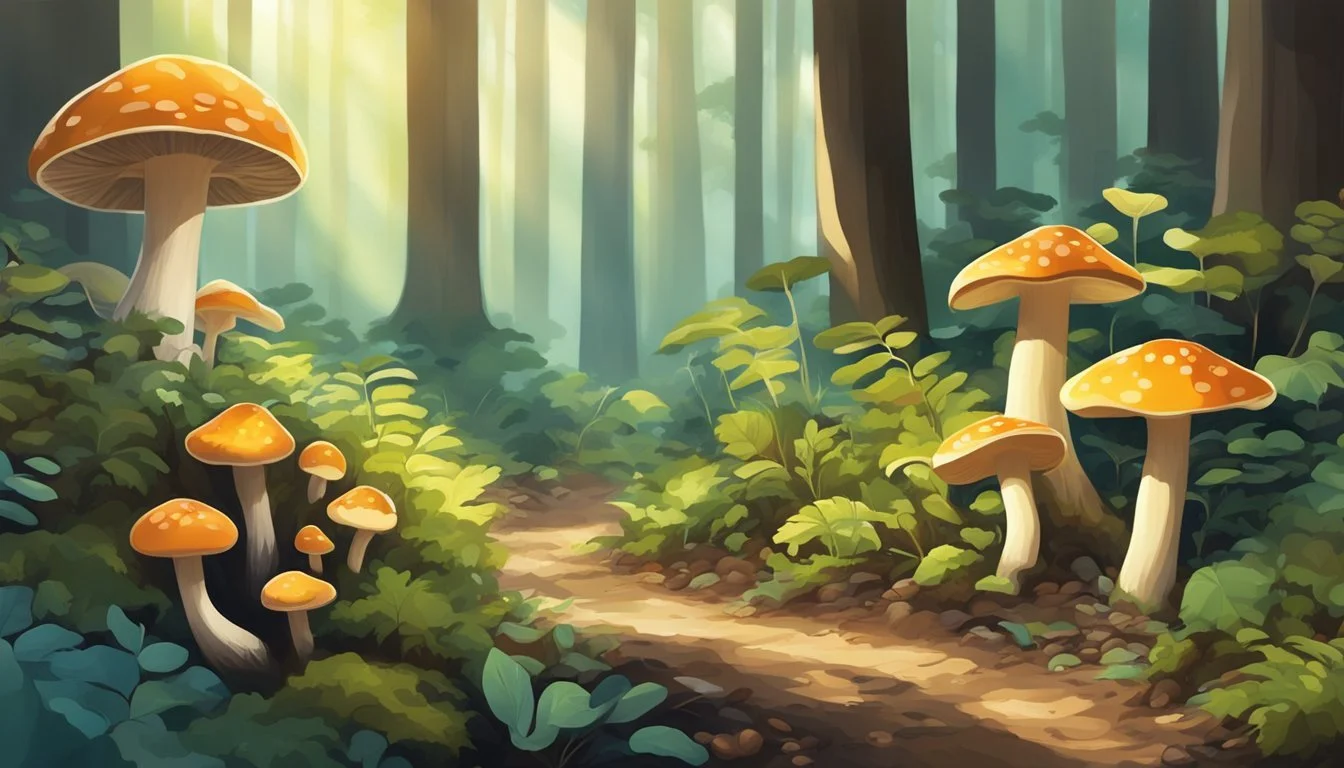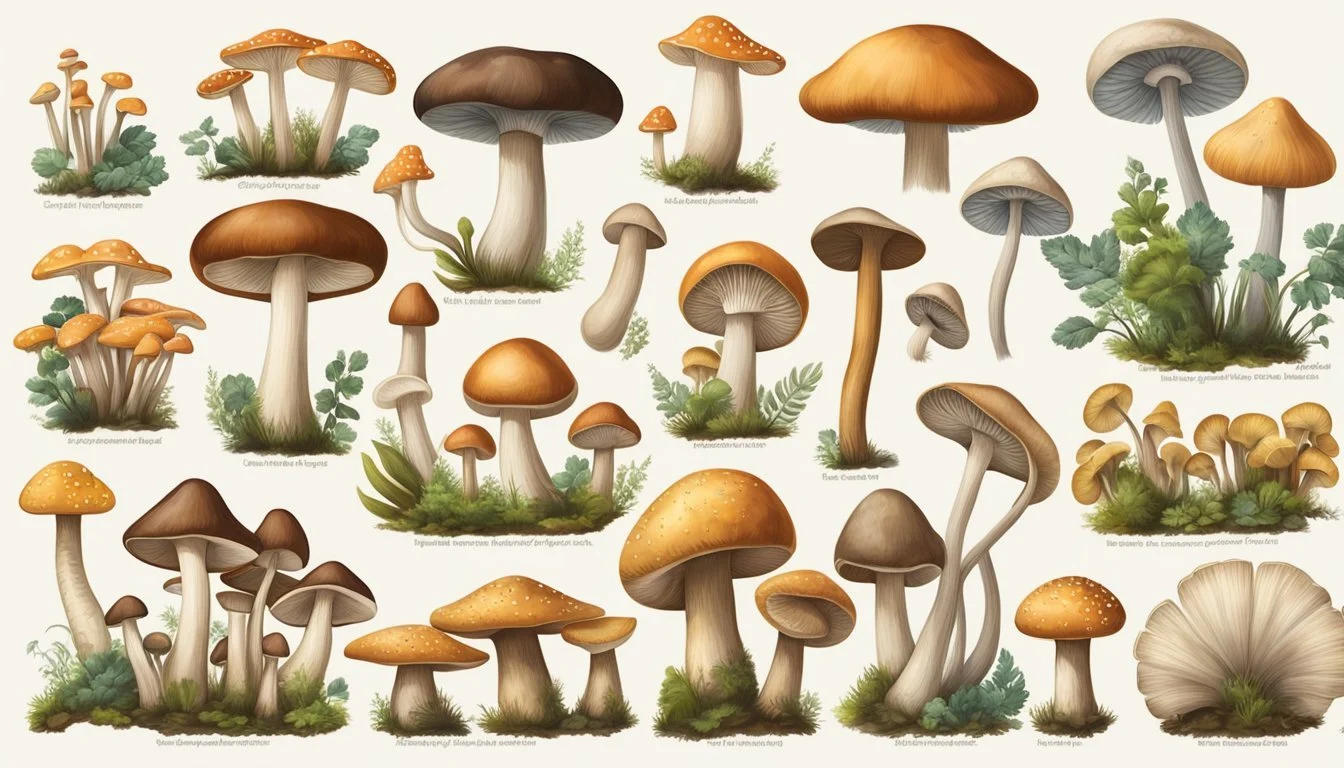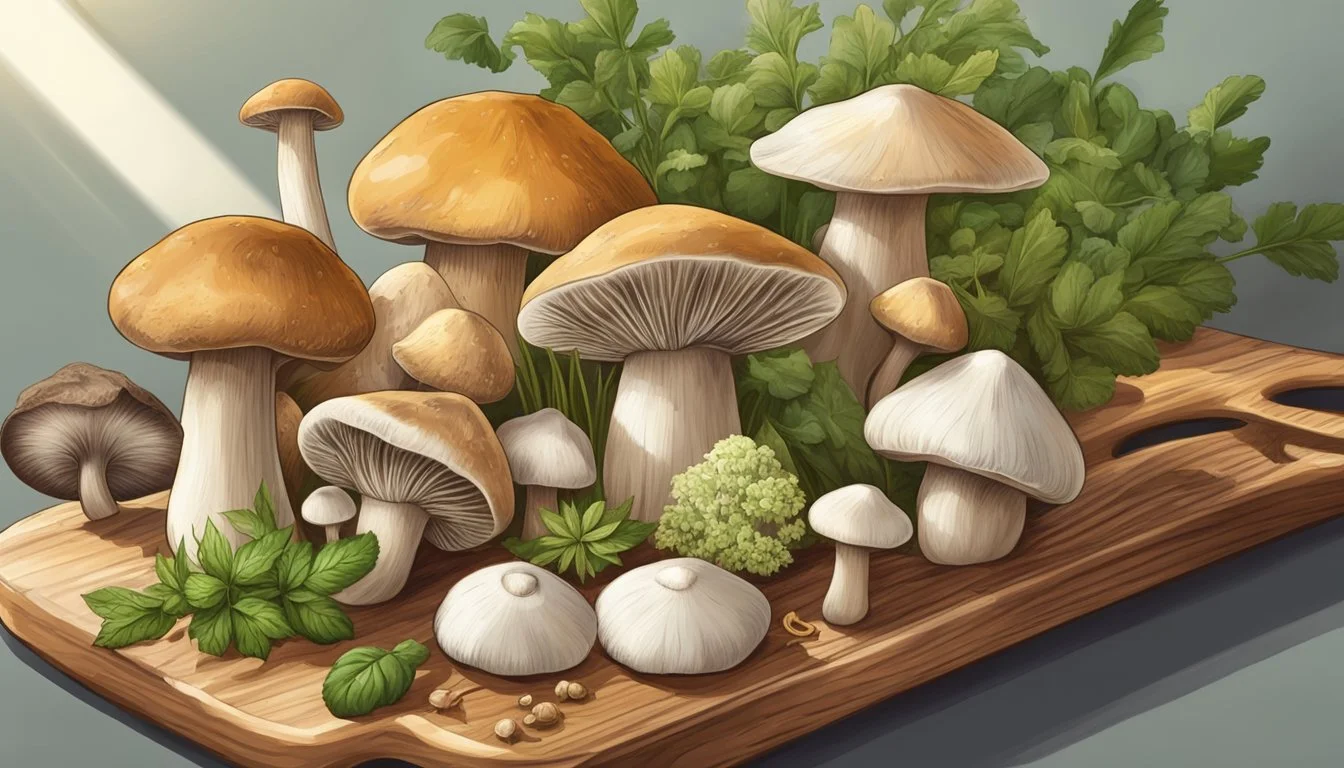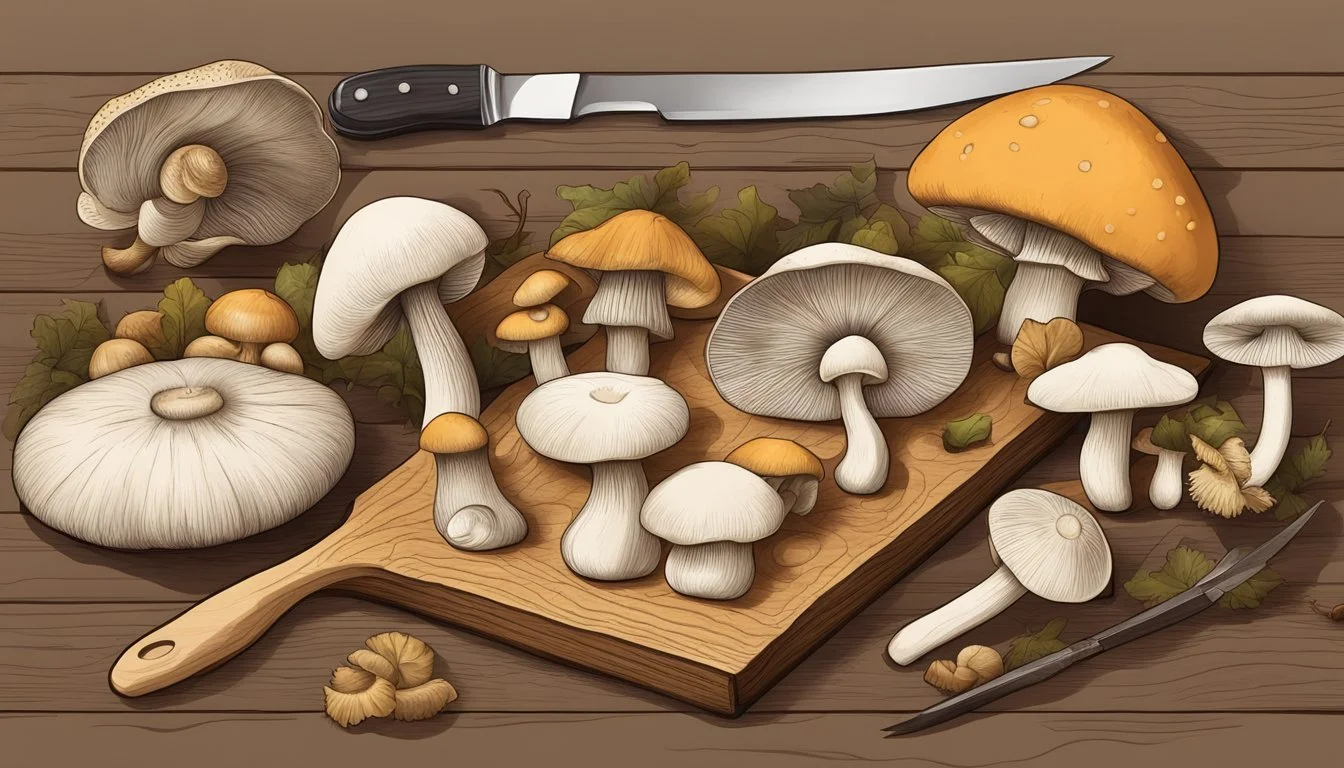Joe Rogan Dives Deep into Mycology with Renowned Mushroom Expert
Expert Mycologist Joins Popular Podcast
Paul Stamets, often referred to as the "Joe Rogan mushroom guy," has become a prominent figure in the world of mycology and fungi enthusiasts. His appearances on the Joe Rogan Experience podcast have catapulted him into the spotlight, introducing millions of listeners to the fascinating realm of mushrooms and their potential uses.
Stamets is a renowned mycologist, author, and advocate for the use of fungi in various applications, including medicine, bioremediation, and sustainable agriculture. His expertise and passion for mushrooms have made him a sought-after guest on Rogan's show, where he has shared intriguing insights about the fungal kingdom and its impact on human life.
During his appearances on the JRE podcast, Stamets has discussed a wide range of topics, from the potential therapeutic effects of psilocybin mushrooms to the role of fungi in environmental restoration. His engaging conversations with Rogan have sparked curiosity and debate among listeners, contributing to a growing interest in mycology and the potential benefits of mushrooms in various fields.
The Joe Rogan Experience and Fascination with Mushrooms
The Joe Rogan Experience podcast has played a significant role in popularizing discussions about mushrooms. Through interviews with experts like Paul Stamets, the show has sparked widespread interest in the potential benefits and applications of various fungi species.
Paul Stamets' Appearances on JRE
Paul Stamets, a renowned mycologist, has been a guest on The Joe Rogan Experience multiple times. His first appearance was on episode #1035, where he shared his extensive knowledge about mushrooms and their uses.
Stamets discussed topics ranging from medicinal fungi to bioremediation. He introduced listeners to lesser-known mushroom species like Agarikon and Turkey Tail, highlighting their potential health benefits.
In a subsequent appearance on episode #2134, Stamets delved deeper into the world of fungi. He explored the immunological properties of certain mushroom species and touched on the controversial subject of psilocybin mushrooms.
Impact of Mushroom Discussions on Public Interest
The Joe Rogan Experience's mushroom-focused episodes have significantly increased public fascination with fungi. Rogan's conversations with Stamets have exposed millions of listeners to the potential applications of mushrooms in medicine, ecology, and personal wellness.
These discussions have sparked curiosity about various mushroom species. Lion's Mane, for example, gained attention for its potential cognitive benefits. The podcast has also contributed to renewed interest in the therapeutic potential of psilocybin mushrooms.
The show's influence has extended beyond casual interest. It has prompted many listeners to explore mycology further, leading to increased sales of mushroom-related books and products. This growing interest has also fueled more scientific research into the properties and potential uses of various fungi species.
Who is Paul Stamets?
Paul Stamets is a renowned mycologist and passionate advocate for fungi. He has made significant contributions to the field of mycology through his research, writing, and activism.
Mycologist and Advocate for Fungi
Paul Stamets has dedicated his life to studying fungi and promoting their potential benefits. He is known for his extensive knowledge of mushrooms and their various applications. Stamets has written several books on mycology, including "Mycelium Running" and "The Mushroom Cultivator." These works have helped educate both professionals and enthusiasts about fungi.
Stamets has appeared on popular platforms like Joe Rogan's podcast to share his expertise. His appearances have helped bring mycology to a broader audience. He often discusses the medicinal properties of mushrooms and their potential for bioremediation.
Stamets' Contributions to Mycology
Paul Stamets has made notable contributions to the field of mycology through his research and innovations. He has developed techniques for cultivating rare and medicinal mushrooms. Stamets holds multiple patents related to the use of fungi for various purposes.
His work explores the potential of fungi in environmental restoration and human health. Stamets advocates for the use of mycelium in cleaning up polluted environments. He has also researched the medicinal properties of certain mushroom species.
Stamets' research has led to discoveries about the potential benefits of fungi in treating various health conditions. His work continues to expand our understanding of the diverse applications of mushrooms and mycelium.
Mushrooms: Biology and Varieties
Mushrooms are fascinating organisms with diverse structures and functions. They play crucial roles in ecosystems and offer potential benefits for human health and nutrition.
Understanding Fungi and Mycelium
Fungi form a distinct kingdom separate from plants and animals. Mushrooms are the fruiting bodies of certain fungal species. The main body of a fungus consists of mycelium - a network of thread-like structures called hyphae.
Mycelium grows underground or within organic matter. It absorbs nutrients and forms symbiotic relationships with plants. Some fungi can spread their mycelium over vast areas, creating some of the largest organisms on Earth.
Mushrooms emerge from mycelium when environmental conditions are right. They produce and release spores for reproduction. Many mushroom species have a cap, stem, and gills, but shapes and colors vary widely.
Distinguishing Portobello and Medicinal Mushrooms
Portobello mushrooms are a popular edible variety. They're actually mature cremini mushrooms, both cultivars of Agaricus bisporus. Portobellos have a meaty texture and rich flavor, making them a common meat substitute.
Medicinal fungi differ from culinary mushrooms in their bioactive compounds. Species like reishi, turkey tail, and lion's mane contain polysaccharides, triterpenes, and other molecules with potential health benefits.
These fungi have been used in traditional medicine for centuries. Modern research is exploring their effects on immune function, cognitive health, and more. While promising, many claims require further scientific validation.
Health Benefits of Mushrooms
Mushrooms offer a wide range of potential health benefits, from boosting immunity to supporting cognitive function. Research has shown promising results for various fungi in medicinal applications and overall wellness.
Medicinal Properties of Fungi
Certain mushroom species contain powerful compounds that may help fight diseases. Lion's Mane mushroom has shown potential for improving cognitive function and nerve health. Turkey Tail mushrooms are rich in antioxidants and may support immune system function. Reishi mushrooms have been studied for their anti-inflammatory and immune-modulating effects.
Some fungi produce antibacterial and antiviral substances. Agarikon, a rare wood-dwelling mushroom, has demonstrated strong antimicrobial properties in lab studies. Cordyceps mushrooms have been traditionally used to boost energy and endurance.
Research on Mushrooms and Wellness
Scientific studies are exploring the effects of mushrooms on human health. Researchers are investigating psilocybin, found in certain mushrooms, for potential benefits in treating depression and anxiety disorders. Clinical trials have shown promising results for some mushroom extracts in cancer treatment support.
Mushroom consumption may contribute to overall wellness. Many edible mushrooms are low in calories but high in nutrients like selenium, potassium, and B vitamins. Some studies suggest regular mushroom intake could support heart health and weight management.
Ongoing research aims to unlock more potential benefits of fungi. As interest grows, larger-scale studies may provide further insights into the therapeutic applications of various mushroom species.
Concerns and Misconceptions
Mushroom consumption has sparked debates and raised questions about potential risks. While many mushrooms offer health benefits, some concerns persist regarding safety and effects.
Addressing Myths Surrounding Mushroom Consumption
Misconceptions about mushrooms often stem from lack of knowledge or unfounded fears. Many people believe all wild mushrooms are dangerous, but experts can identify safe, edible species. Some worry mushrooms are high in calories, yet most varieties are low in calories and fat.
Another common myth is that cooking destroys the nutrients in mushrooms. In reality, cooking can enhance the bioavailability of certain compounds. Some fear mushrooms are dirty or unsanitary, but commercially grown mushrooms are cultivated in controlled environments.
Negative Effects and Hydrazines
While most edible mushrooms are safe, some contain compounds that may cause adverse reactions. Hydrazines, found in certain mushrooms like the common button mushroom, have raised concerns. These compounds have shown carcinogenic properties in animal studies.
Cooking mushrooms thoroughly can reduce hydrazine levels. Some individuals may experience allergic reactions or digestive issues when consuming certain mushroom species. It's important to note that wild mushrooms should only be consumed if identified by experts, as some toxic species can cause severe illness or even death.
Moderation is key when incorporating mushrooms into one's diet. Those with specific health conditions should consult a healthcare professional before significantly increasing mushroom consumption.
Paul Stamets' Philosophy and Mycelium Running
Paul Stamets advocates for the transformative potential of fungi in ecology and human health. His work focuses on mycelium networks and their applications in environmental restoration and medicinal uses.
'Mycelium Running': A Look at Stamets' Book
"Mycelium Running" explores the vast underground fungal networks that connect ecosystems. Stamets argues these networks are crucial for soil health and plant communication. He details how mycelium can break down pollutants and restore damaged environments.
The book outlines six ways mushrooms can help save the world:
Mycorestoration
Mycofiltration
Mycoremediation
Mycoforestry
Mycopesticides
Medicinal mushrooms
Stamets provides practical advice for cultivating mushrooms and harnessing their benefits. He emphasizes the importance of preserving fungal biodiversity for future scientific discoveries and ecological balance.
Mushrooms' Role in Bioremediation
Stamets champions the use of fungi in cleaning up environmental pollutants, a process known as mycoremediation. He has demonstrated how certain mushroom species can break down toxic waste, including oil spills and chemical weapons.
Key examples of mycoremediation include:
Using oyster mushrooms to clean up petroleum contamination
Employing fungi to absorb radioactive cesium from soil
Utilizing mycelium to filter water pollutants
Stamets argues that fungi offer cost-effective and environmentally friendly solutions for pollution cleanup. He advocates for integrating mycoremediation into mainstream environmental restoration practices.
His research shows that mushrooms can accumulate heavy metals, making them effective in soil decontamination. This ability of fungi to transform harmful substances into benign compounds highlights their potential in addressing global environmental challenges.
Application of Mushrooms in Industries
Mushrooms have found diverse applications across various industries. In bioremediation, certain fungi species excel at breaking down pollutants and toxins in contaminated environments. These organisms can absorb and neutralize harmful substances, making them valuable tools for environmental cleanup efforts.
The textile industry utilizes mushrooms to create sustainable fabrics and leather alternatives. Mycelium, the root-like structure of fungi, can be grown into sheets and processed into durable, eco-friendly materials.
In construction, mushroom-based materials offer innovative insulation solutions. These biodegradable products provide effective thermal and acoustic insulation while reducing reliance on synthetic materials.
The food industry incorporates mushrooms beyond culinary uses. Fungi-derived ingredients serve as natural preservatives and flavor enhancers in processed foods. Additionally, some species produce enzymes used in food production processes.
Pharmaceutical companies research mushrooms for their potential medicinal properties. Certain fungi contain compounds that show promise in treating various health conditions, leading to the development of new drugs and therapies.
The packaging industry explores mushroom-based materials as sustainable alternatives to plastic. These biodegradable options offer protective packaging solutions that decompose naturally, reducing environmental impact.
Mushrooms in Popular Culture and Media
Mushrooms have gained significant attention in mainstream media, particularly through podcasts and combat sports. Their portrayal ranges from culinary delights to mind-altering substances, capturing public fascination.
Portrayal of Mushrooms in Film and Television
Mushrooms frequently appear in visual media, often as symbols of mystery or transformation. Fantasy films like "Alice in Wonderland" feature magical mushrooms that alter size and perception. TV shows such as "The Last of Us" depict fungi in a more sinister light, as the source of a zombie-like apocalypse.
Documentaries explore the scientific and cultural aspects of mushrooms. "Fantastic Fungi" (2019) showcases the beauty and ecological importance of fungi, garnering critical acclaim. Cooking shows regularly feature gourmet mushroom varieties, highlighting their culinary versatility.
Mainstream Recognition and the UFC Connection
Joe Rogan, UFC commentator and podcast host, has played a key role in bringing mushrooms into mainstream discourse. His podcast "The Joe Rogan Experience" frequently discusses both culinary and psychedelic mushrooms.
Rogan's platform has introduced millions to mycology experts like Paul Stamets. These discussions cover topics from medicinal mushrooms to psilocybin research. The UFC connection has exposed a diverse audience to mushroom-related content.
Some UFC fighters have openly discussed using mushroom supplements for performance and recovery. This has sparked interest in fungi's potential benefits for athletes.
Recommendations for Safe Mushroom Consumption
When consuming mushrooms, it's crucial to prioritize safety. Only eat mushrooms from trusted sources or those you can confidently identify.
For culinary mushrooms, purchase from reputable grocers or farmers' markets. Avoid wild mushrooms unless you have expert knowledge in identification.
Proper storage is key. Keep mushrooms refrigerated in a paper bag to maintain freshness and prevent spoilage.
Always cook mushrooms thoroughly. Raw mushrooms can be difficult to digest and may contain harmful compounds that are destroyed by heat.
Some edible mushrooms have powerful health benefits. Lion's Mane, for example, may support brain health and cognitive function.
Safe Consumption Tips:
Clean mushrooms gently with a damp cloth
Remove any discolored or slimy parts
Cook until tender and lightly browned
Start with small amounts when trying new varieties
Be cautious with medicinal mushroom supplements. Consult a healthcare professional before adding them to your regimen, especially if you have pre-existing conditions or take medications.
For those interested in psychedelic mushrooms, it's essential to understand local laws and potential risks. Microdosing should only be considered under professional guidance.
Remember, not all mushrooms are safe for consumption. When in doubt, err on the side of caution and avoid unknown varieties.








